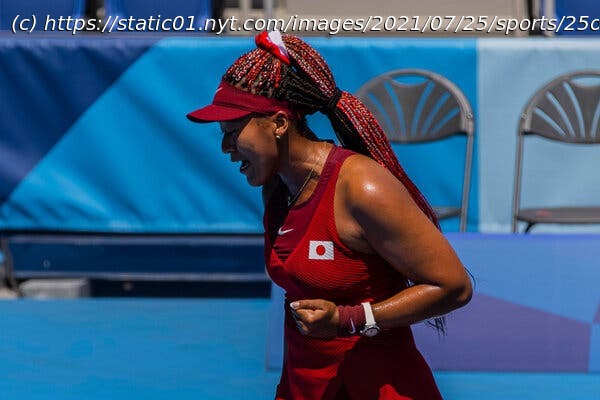After the tumult over her skipping the French Open and Wimbledon, she returned to light the cauldron for what may very well end up as the Osaka Games.
In the early afternoon Sunday, Naomi Osaka walked onto Centre Court at the Ariake Tennis Park to begin her quest for an Olympic gold medal. She was supposed to play on Saturday, but the match happened to be delayed hours after she stood atop a pyramid built in the shape of Mount Fuji and lit the Olympic cauldron. Once again, it seemed the sports world was bending in the direction of one of the best tennis players in the game. It was quite the turn for Osaka, who just seven weeks ago was enduring the first true crisis of her career. She caused upheaval in the tennis world, and intensified the discussion around athletes and mental health, when she withdrew from the French Open and skipped Wimbledon as well after refusing to endure what she called the stress of mandatory news conferences at Grand Slam tournaments. For a while, the Olympics hung in the balance until she committed to them, unable to pass up representing Japan on home turf. Then on Friday night, there she was, joining a very short list of Olympic flame lighters that includes Muhammad Ali, Wayne Gretzky, Rafer Johnson and Cathy Freeman, the Australian runner and a singular figure of Indigenous people. “I feel a little bit out of my body right now,” Osaka said on Sunday, minutes after winning her first round match in the Olympic tennis competition, a rare 87 minutes of normalcy. Osaka,23, has described herself as shy and still adjusting to life in the spotlight and being the face of her sport and so much more. She represents a new generation in Japan trying to embrace multiculturalism in a way its predecessors have not.






